Nevada Twilight Part 2
March – April 2020
Local Lore & Mysterious Matters
Episode 2: A casino’s riches vanish, a ghostly stickup, and an elusive serpent.
BY ERIC CACHINERO

Mankind’s natural curiosity for the mysterious and unexplained spans our entire history. Where is the lost city of Atlantis? Will we ever know the identity of Jack the Ripper? How were ancient sites like Stonehenge and the Great Pyramids constructed? Is Bigfoot real? What actually caused the dinosaurs to go extinct? Do aliens exist?
Nevada holds its own collection of myths and mysteries, peculiar and unexplained. Some are morbid, some are silly, but all require the reader to take a small step—or leap, if you like—into a “Twilight Zone” mindset. Sit back, relax, and enjoy, because you’ve just crossed over.

INTO THIN AIR
On Sept. 22, 1992, at the Stardust Casino in Las Vegas, $507,361 in cash and gaming chips vanished into thin air. Strangely, the misplaced money wasn’t the usual result of a botched game of blackjack or a prosperous poker pro—it simply up and vanished from a casino vault without a trace. Once word of the missing money swirled, alarm bells sounded and panic ensued, though investigating authorities and casino executives were left scratching their heads as they reviewed security cameras—which covered nearly every square inch of the casino—and found absolutely nothing. They did uncover one strong lead though. One of the Stardust’s long-time sportsbook employees—John Brennan—along with the money in question, had gone missing.
 Brennan’s coworkers would later recall that months prior to the incident, he began acting strangely. This oddity was amplified considering that the 34-year old employee was, up until that point, so boringly normal that he was almost invisible. Former Stardust race and sportsbook Manager Richard Saber described Brennan as, “basically a total complete loner,” adding, “he lived alone with his cat.” Other coworkers say that during that time, Brennan was seen at work reading a book on the topic of changing his identity. But perhaps the most abrupt change in Brennan’s behavior was the fact that he was befriended by an unnamed and untrustworthy Stardust high roller, who, according to coworkers, spent an inordinate amount of time with Brennan before the money’s disappearance.
Brennan’s coworkers would later recall that months prior to the incident, he began acting strangely. This oddity was amplified considering that the 34-year old employee was, up until that point, so boringly normal that he was almost invisible. Former Stardust race and sportsbook Manager Richard Saber described Brennan as, “basically a total complete loner,” adding, “he lived alone with his cat.” Other coworkers say that during that time, Brennan was seen at work reading a book on the topic of changing his identity. But perhaps the most abrupt change in Brennan’s behavior was the fact that he was befriended by an unnamed and untrustworthy Stardust high roller, who, according to coworkers, spent an inordinate amount of time with Brennan before the money’s disappearance.
When authorities realized Brennan was missing along with the money, they raced to his home, though to their dismay, the prime suspect was nowhere to be found. They did notice another thing missing: his cat.
It was becoming clear at this point, that the silent heist was growing cold. There had been no weapons used, no police chase, no witnesses, no hostages, no security footage, no further leads, no evidence—the perfect crime.
 Though was it the perfect crime for Brennan, or for someone else? Did he pay the ultimate price for his larceny?
Though was it the perfect crime for Brennan, or for someone else? Did he pay the ultimate price for his larceny?
The unnamed Stardust high roller that had befriended Brennan also disappeared, leading to perhaps the most mysterious aspect of the crime. Officials speculated whether the gambler had been in on the crime with Brennan, and whether the man had connections to the mob or other organized crime syndicates. This may explain how Brennan was able to obtain all of the necessary documents to change his identity and start a newer, richer life, if that is what happened.
Almost three decades have passed since the casino industry experienced one of the most mysterious unsolved heists ever, and theories about Brennan’s whereabouts still abound. Some familiar with the case theorize that Brennan was able to split his loot with the unnamed gambler, and successfully start a new life in a new town. Others think he may have been nothing more than an insider pawn in an elaborate mob heist, and was killed and buried somewhere in the Nevada desert after he was no longer needed. In any case, the mystery of Nevada’s own D.B. Cooper lives on. Who knows; he may even be reading this story right now.
How did Brennan manage to sneak a half million dollars out of a high-security casino unnoticed? Did he start a new life with a new identity? Or was he tricked by the mob, and discarded once he was no longer needed?

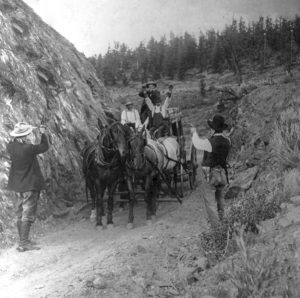
GHOSTLY STICKUP
Sometime during the latter half of 1800s Carson City, from behind cold iron bars, a solitary bandit peered at his treasure. The Nevada State Prison walls were the only thing standing in the way between him and the bundle of gold and silver wealth he had, according to him, stolen fair and square and hidden in the hills near the prison. His three accomplices had perished in the gunfight over the stolen riches, and Manuel “The Mexican” Gonzales vowed not to reveal the location of the hidden treasure, which he would later claim he could see from his cell window.
The events that lead to Gonzales’ arrest unfolded during a notorious stage robbery in the town of Empire, located due east of Nevada’s capital city. Gonzales, along with three other highwaymen, planned to stick up a Wells Fargo stage carrying gold and silver from Virginia City to the Carson City Mint. Just as the driver and guard relaxed with Carson City in sight, the four bandits jumped from behind the sagebrush with guns drawn, pulled the loot off of the stage, and sent the stage occupants high-tailing it with an empty load. Once the stage reached town, a posse was quickly formed and sent after the four outlaws. The vigilante group quickly caught up with the outlaws, and a deadly gunfight ensued, with Gonzales as the sole survivor. He was tried and sentenced to 20 years in the state prison, though even through interrogation, wouldn’t give up the location where the robbers had hidden the loot before the gunfight.
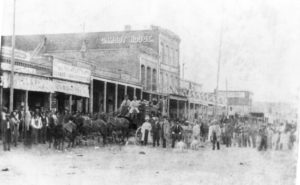
Gonzales served about eight years in prison before he came down with an incurable sickness. Nevada’s governor, along with Wells Fargo, decided to pardon him for his crimes and release him from prison, with the hopes that he would try to recover the riches, leading authorities to the loot. To their surprise, that didn’t happen. Though deathly ill, Gonzales kept the secret safe for some time, before a Carson City butcher called the “old Dutchman” eventually convinced Gonzales to show him the location. As the two set off to find the treasure, Gonzales suffered a massive hemorrhage, and died on the spot. So too died the location of the buried treasure.
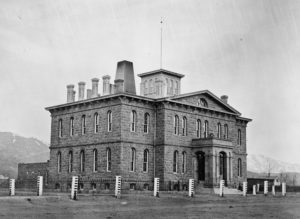
Though treasure hunters and Nevada State Prison employees have spent countless hours metal detecting the hills around the prison hoping to uncover the famous riches, Nevada Historian Guy Rocha explained in a 2008 article that, “The story…is pure invention, first appearing in a book called ‘Pots O’ Gold’ in 1935.”
This mystery dives deeper, though.
Rocha explained that book “Pots O’ Gold” bears the name Matt R. Penrose on the cover. Penrose is a former Nevada State Prison warden, and the book details many notorious Nevada outlaws, Nevada’s first lethal gas-execution chamber pioneered by Penrose, and more Nevada State Prison commentary.
However, in a strange twist, retired Nevada State Historical Society curator Philip I. Earl revealed in a 2005 issue of Nevada Magazine, that “Pots O’ Gold” was actually written by John K. “Jack” Meredith, a Nevada State Prison inmate, lifelong confidence man, and master of forgery. Meredith—who was entrusted with teaching the literacy program at the Nevada State Prison—was a ghostwriter (a term used when a writer’s work is officially credited to another person) for the book, lending even more credence to the claim that the complete chronicle was concocted in canard.
His allegedly fabricated tale of the Carson City stage robbery wasn’t the only thing Meredith was famous for in Nevada. After being convicted of forgery in Elko in 1933, Meredith was sent to Carson City to serve his sentence. While heading the literacy program in prison, Meredith gained the trust of prison officials, and built a reputation as a skilled inmate detective of sorts, helping lawmen solve several cases in Nevada and California.
On May 17, 1937, Sheriff Orrin Brown of Alpine County, California, asked Meredith to accompany him to Hot Springs Mountain, located in eastern Carson Valley, to search for $10,000 of stolen jewelry that was apparently stashed beside an abandoned mineshaft. As the two searched for the jewels, Meredith waited for Brown to get a good distance away, before he ran back to steal the sheriff’s car. He made it all the way to Minden in the stolen vehicle, before meeting with Clarence O. Dangberg of the C.O.D. Garage, and convincing him to lend him a different vehicle so he could go back to save the sheriff, who he claimed had fallen and broken his leg.
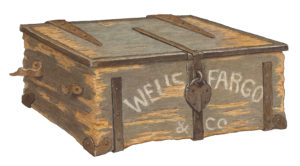
Meredith lead state and federal lawmen on a nationwide game of whack-a-mole after that. His name would appear on a fake check in Seattle one day, then Indianapolis the next. Eventually he was snagged in New York City and extradited to Nevada, where he was reunited with his old prison number, and served four years before parole. He would go on to spend the rest of his days dodging lawmen and bouncing in and out of prisons across the U.S., before finally disappearing forever.
Did Meredith in fact fabricate the entire robbery story? Why did he ghostwrite the book for Penrose?
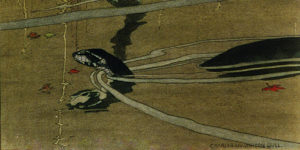
WALKER LAKE SERPENT
On May 23, 2016, “Mineral County Independent News” reporter Heidi Bunch wrote the following, “Completely sober and reliable residents of Hawthorne claim to have seen the gigantic sea serpent, which is said to live in the depths of Walker Lake. He is said to emerge every 100 years to public gaze, but this is not credited to over-enthusiastic members of Hawthorne committees, because many local residents have heard serpent eyewitnesses make excited reports well within the past 100 plus years!”
Bunch’s account of Walker Lake serpent sightings summarizes a long history of Nevada’s own Loch Ness Monster, which owes its roots to Native American legend. The Walker River Paiute Tribe’s legend describes two serpents living in the lake, male and female, both of which used to be human. Though there are many different stories about the lake beasts, one notable tale tells how the serpents became separated from one another as the ancient Lake Lahontan began to dry up. The male serpent made his home in Walker Lake (one of two surviving remnants of ancient Lake Lahontan), while the female serpent made her way to Sand Mountain in the north. Sand Mountain is famous for its “singing” sands, which legend says is the lady serpent crying out for her long-lost partner.
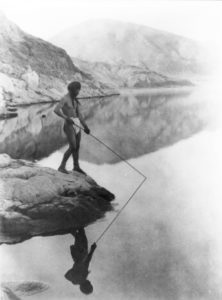
But Native Americans weren’t the only ones to spot the elusive serpent in Walker Lake. Numerous sightings, some well-documented, have surfaced, starting with a letter in the Aurora newspaper “Esmeralda Union” in 1868. In the letter, a man by the name of Rueben Strathers claimed to have killed a monster with “a head in shape not unlike that of a crocodile, with forefeet near the neck, with tail of enormous length, which lay perfectly quite, and only the body part moving, which apparently was covered with scales, glistening in the sun.” The slayer of the mighty creature added, “The stench became overpowering and sickly” when they approached.
In 1883, another encounter with the serpent was published in the “Walker Lake Bulletin.” The account describes how a group of Native Americans were camping by the lake, when they, “were awakened by a horrible soul-shrieking screech. Looking out, they plainly discerned two monster serpents fighting. The battle continued for some time and finally extended to dry land, where one of the ghoul reptiles was seriously wounded.” The paper described that the Native Americans had killed the beast and measured it, claiming it to be a whopping “seventy-nine feet seven inches and a quarter in length.”

Since those early days, there have been countless reports of sightings, though in 1964, the serpent would “materialize” for all to see. Cecil the Serpent, as it became known, was constructed as a large floating structure, though in 1966, the beast was lit on fire due to some out-of-control fireworks. After that, Cecil became a parade float in the Armed Forces Day celebration in Hawthorne, as well as the Nevada Day parade in Carson City.
Even though Cecil has become a Nevada parade celebrity, there are still many who believe that there truly is a giant ancient serpent scouring the depth of Walker Lake. The only way to be sure is to sail out on the lake for yourself. If Nevada legend holds true, serpent seekers will probably smell the creature first.
Why have there been so many Walker Lake serpent sightings during the last 150 years? Why did newspapers publish accounts of the monster with seemingly no follow-up? If the lake serpent isn’t real, what are people actually seeing?




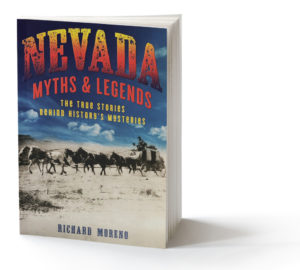 Read More About It
Read More About It